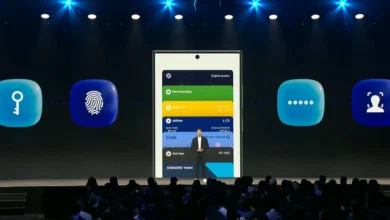Apple iOS 17.3 Unveils Groundbreaking Stolen Device Protection: Safeguarding Your iPhone Beyond Boundaries
The latest iOS update introduces robust security measures to thwart theft and protect user information

In a move to fortify user security, the recently released iOS 17.3 update unveils a significant feature: Stolen Device Protection for iPhone. This latest addition aims to shield user accounts and personal data, especially when the device ventures beyond its customary surroundings like home or workplace, mitigating the risk of compromise in case of theft.
Once activated, Stolen Device Protection imposes enhanced security measures for specific features and actions when the iPhone is outside recognized locations. This added layer of security ensures that even if a thief gains access to the device’s passcode, critical changes to accounts or the device itself remain beyond reach.
The security enhancements include the implementation of Face ID or Touch ID biometric authentication for accessing stored passwords and credit cards. This not only adds an extra layer of protection but also limits access solely to the device owner. Additionally, a Security Delay protocol is introduced, requiring an hour-long wait and a secondary Face ID or Touch ID authentication for actions like changing the Apple ID password.
In the unfortunate event of an iPhone being stolen, the Security Delay acts as a strategic deterrent, hindering unauthorized individuals from executing critical operations. This feature provides users with a window to mark their device as lost and secure their Apple account promptly. Detailed guidance on what to do if an iPhone is lost or stolen is also provided.
Stolen Device Protection is context-sensitive, with additional security steps required only when the iPhone is not within familiar locations, including the home, workplace, and other regular usage areas. In familiar settings, users can continue using their device passcode as usual.
To activate Stolen Device Protection on iOS 17.3, users must set up two-factor authentication for the Apple ID and configure the device with a passcode, Face ID or Touch ID, Find My, and Significant Locations.
Enabling or disabling Stolen Device Protection is a simple process. Users can navigate to Settings, access Face ID & Passcode, enter their device passcode, and toggle the feature accordingly. However, attempting to turn off this protection in an unfamiliar location triggers a security delay, underscoring the importance of deactivating the feature before selling, giving away, or trading in the iPhone.
With Stolen Device Protection active, certain actions demand additional security measures when the iPhone is not in a familiar location. These include Face ID or Touch ID authentication for tasks such as using saved passwords, turning off Lost Mode, erasing content, applying for a new Apple Card, and more. The Security Delay feature also comes into play for critical changes like updating the Apple ID password, signing out, or modifying security settings.



